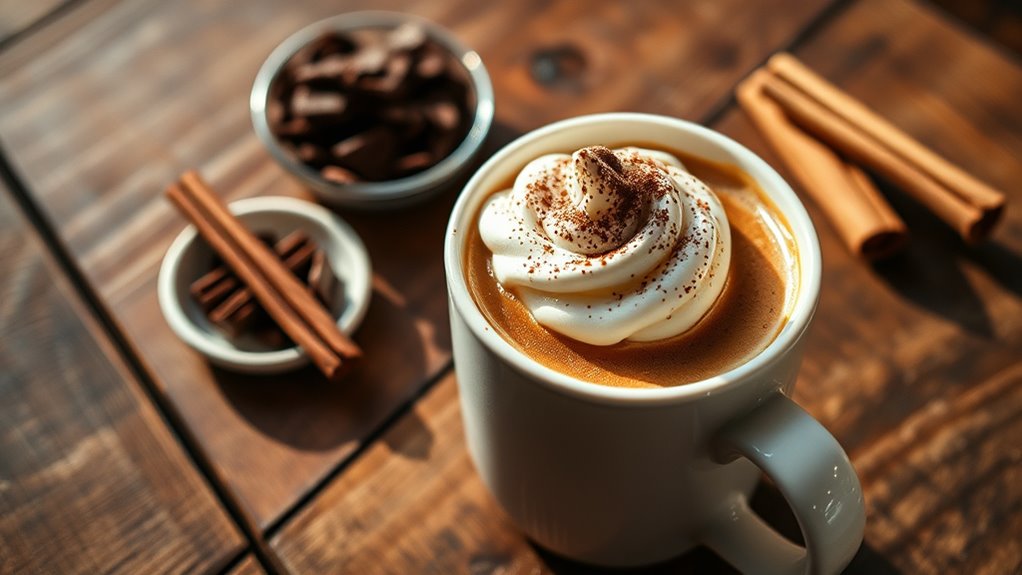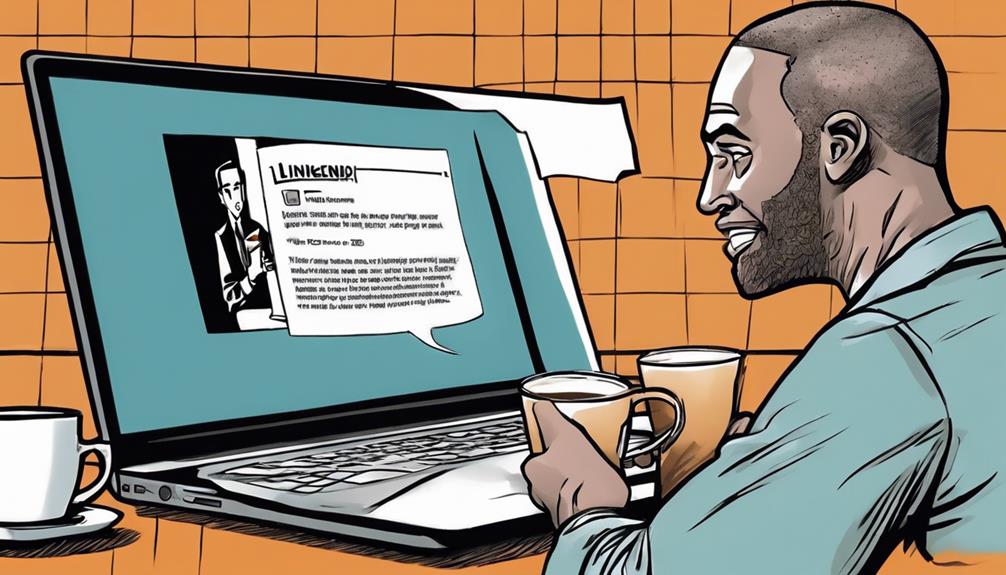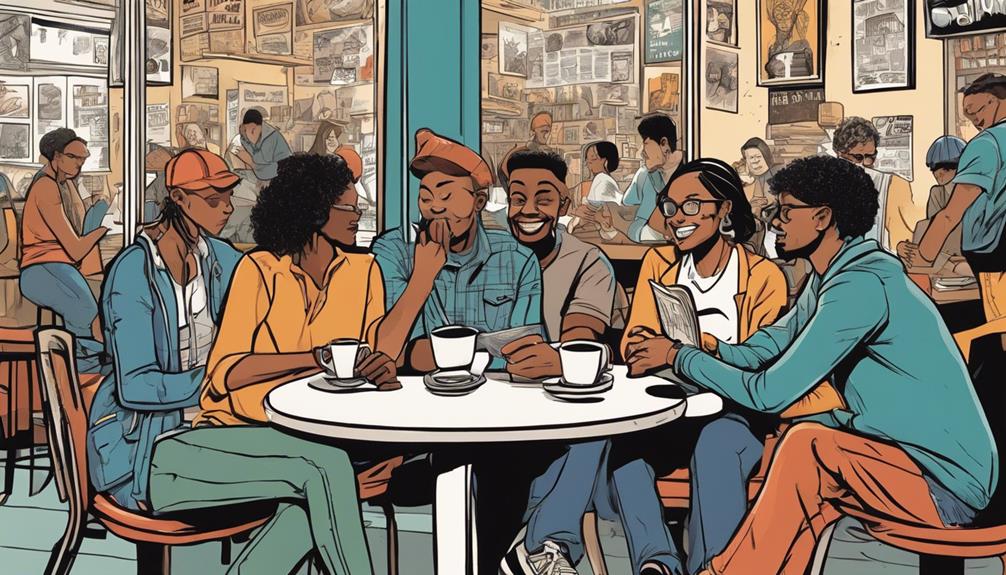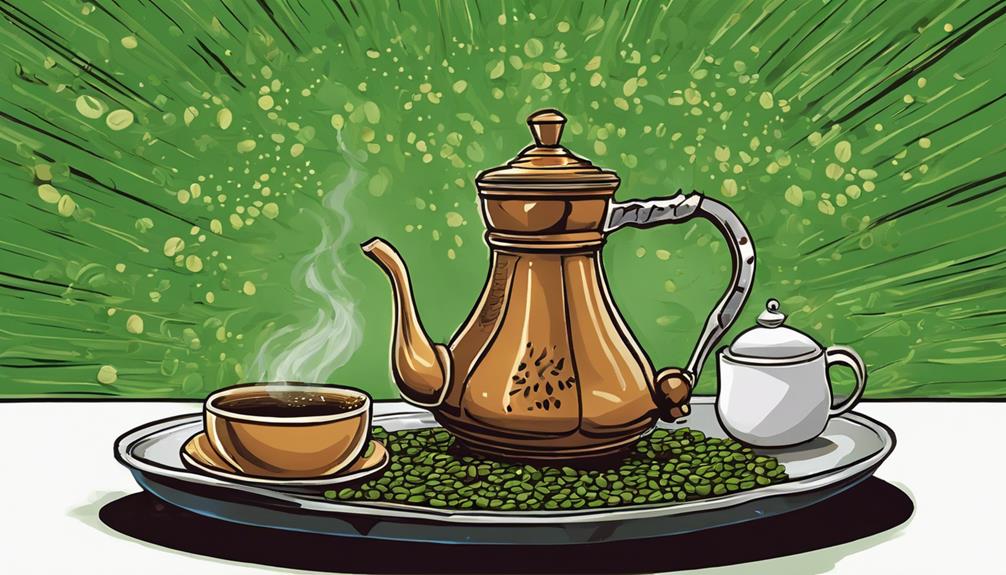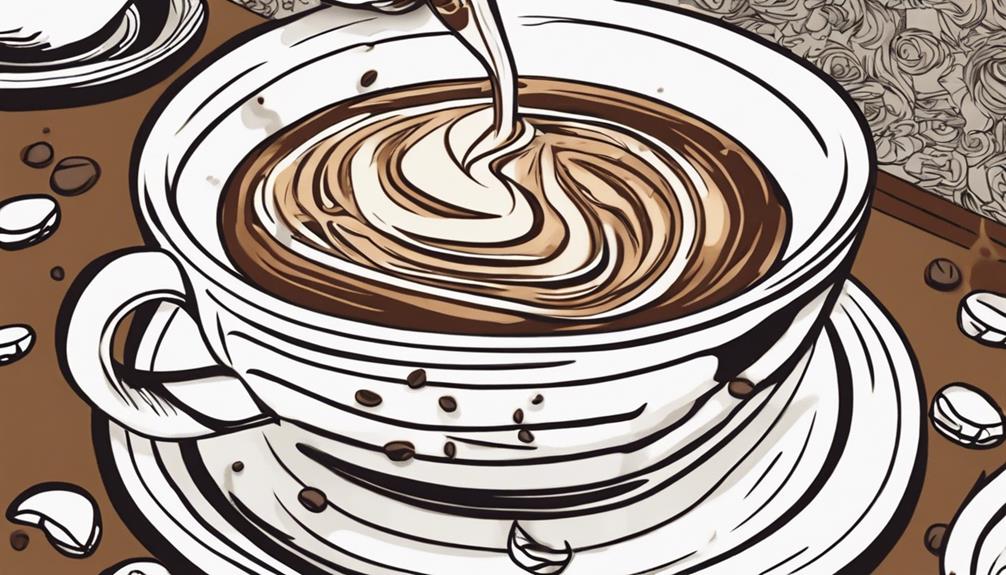To make decaf taste better, start with high-quality, freshly roasted beans and grind them just before brewing. Opt for darker roasts like French or dark roast to add richness and mask dull flavors. Use brewing methods like French press or espresso for fuller extraction, and consider increasing the coffee-to-water ratio for a bolder taste. You can also add flavors like vanilla or cinnamon to enhance the overall experience. Keep exploring for even more tips to improve your cup.
Key Takeaways
- Use high-quality, freshly ground specialty decaf beans processed via natural or water methods.
- Opt for darker roasts like French or dark roast to enhance flavor depth and mask dull notes.
- Adjust brewing strength and method, such as using French press or espresso, for a richer extraction.
- Add flavorings like vanilla, cinnamon, or flavored creamer to mask metallic or dull tastes.
- Experiment with brewing parameters and ingredient freshness to personalize and elevate flavor complexity.
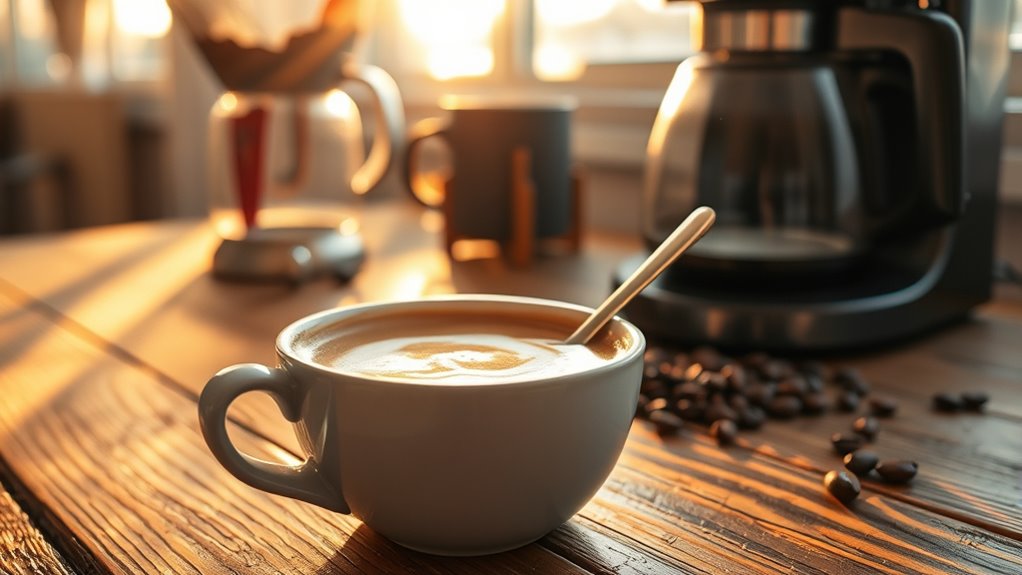
Decaf coffee can taste just as rich and flavorful as regular brew when you know how to optimize its preparation. The key lies in understanding how the roasting process, decaffeination process, and brewing techniques influence its flavor profile.
Decaf coffee starts with high-quality, specialty beans that are carefully selected for their potential to deliver a satisfying taste. These beans, whether naturally decaffeinated or processed through chemical or water methods, retain much of their original flavor if handled properly.
To maximize flavor, it’s essential to freshly grind your coffee beans just before brewing. This ensures maximum aroma and taste transfer, giving your cup a fresher, more vibrant profile.
Choosing the right roast is vital. Opt for darker roasts, such as dark or French roast, because they tend to develop deeper, more complex flavors during the roasting process. Longer roasting times, followed by careful cooling, can enhance the richness and body of your decaf coffee.
This approach helps mask any dull or metallic notes that sometimes linger due to the decaffeination process, resulting in a more satisfying decaf taste. The roasting process directly influences the flavor, so a well-executed, darker roast can bring out bold, caramelized notes that stand up well against added ingredients or stronger brewing methods.
Adjust your brewing parameters to improve flavor extraction. Increasing the coffee-to-water ratio or selecting a stronger brew setting can intensify the flavor, making your decaf more robust and satisfying.
Experimenting with brewing techniques, such as using a French press or espresso machine, can further extract richer, more complex flavors from your specialty beans. Decaf coffee benefits from longer extraction times, which allow the flavors to fully develop and reduce any undesirable bitterness.
Adding flavor-enhancing ingredients is an easy way to elevate the taste experience. Ingredients like cinnamon, flavored creamer, or vanilla extracts can mask any residual metallic or dull notes, creating a more balanced and enjoyable cup.
These additions complement the natural flavors of your decaf, making it taste more lively and satisfying. Remember, the goal is to amplify the inherent qualities of your beans and roasting process while customizing your brew to your taste preferences.
Frequently Asked Questions
How to Take the Bitterness Out of Decaf Coffee?
If you’re wondering how to take the bitterness out of decaf coffee, try adding a pinch of cinnamon to your grounds or cup.
Opt for a darker roast, which naturally reduces bitterness.
You can also add flavored or unflavored creamers to smooth out harsh notes.
Brewing with a slightly stronger setting or more coffee, and ensuring proper extraction time, will also help improve flavor and cut down on bitterness.
What Happens When You Switch From Regular Coffee to Decaf?
When you switch from regular to decaf coffee, you’ll notice some differences in flavor and aroma. Decaf beans often have a milder taste because the decaffeination process can remove some flavor compounds.
You might also observe a slight change in body and brightness. High-quality decafs, like Swiss Water or EA process, help preserve the original flavor, making the shift smoother and less noticeable.
Is There a Downside to Drinking Decaf Coffee?
You might find that drinking decaf coffee has some downsides. It can contain trace amounts of caffeine, which may still affect sensitive people.
Some decafs have a metallic or chemical aftertaste, especially if processed poorly.
The flavor often isn’t as rich or vibrant, sometimes tasting flat or bitter due to lost volatile compounds or over-roasted beans.
Poor storage or processing can make decaf less enjoyable and even unappealing.
How to Make a Good Cup of Decaf Coffee?
To make a good cup of decaf coffee, start with high-quality, specialty decaf beans for better flavor. Grind them just before brewing to keep it fresh.
Brew with a slightly stronger setting or longer extraction to boost flavor. Use the right temperature, around 90–96°C, and avoid over-diluting.
Add a pinch of cinnamon or flavored creamer to enhance aroma and mask any dullness, ensuring a richer, more satisfying taste.
Conclusion
To make decaf taste better, experiment with different brewing methods, add a splash of milk or a sweetener, and choose high-quality beans. Don’t be afraid to try different roasts or grind sizes to find what suits your palate best. With a little tweaking, your decaf can become just as satisfying as regular coffee. So, keep exploring and enjoy your perfect cup every time—you deserve it!
